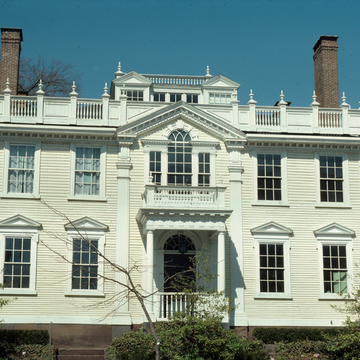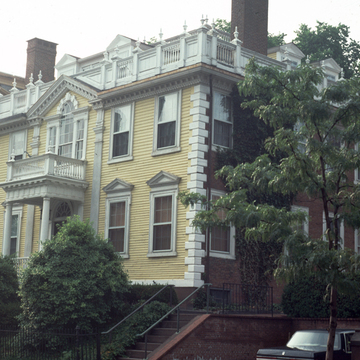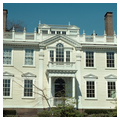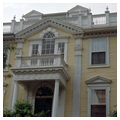Commissioned by Edward Dexter, a prominent merchant of the period, the house was moved to its present site from Prospect and George streets in 1860. Now converted to apartments, it is best known as Charles Pendleton's residence during the late nineteenth and early twentieth centuries. It was here that he displayed his pioneer collection of colonial furniture, which ultimately found its way to Pendleton House at the Museum of the Rhode Island School of Design.
Of all extant Federal houses in the city, the Dexter House is perhaps the most elaborately embellished. It is clapboarded front and back, with brick end walls that accommodate double fireplaces and provide some protection against fire from neighbors. Its Doric-columned entrance porch with balustraded roof shows the customary fanlighted entrance of the period, but with paneling instead of side lights. Giant pilasters (with uncanonically decorated capitals) flank the porch to support a pediment at the roofline which breaks the cornice. The upper stair hall Palladian window unusually thrusts into this pediment. This, in turn, breaks into the balustraded and paneled parapeting with exaggerated finials around the perimeter of the hipped roof. Joined dormers break from the roof slant with more parapeting around the roof deck above and behind. Exceptional, too, its crossetted ground-floor windows, which are nearly unique among Federal houses in Providence for their pediments. Corner quoining and



















